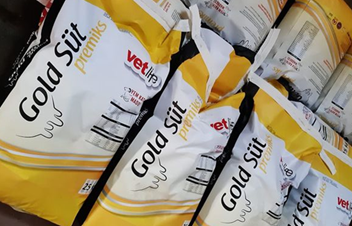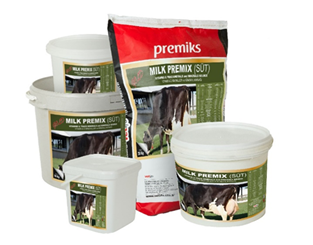GOLD MILK PREMIX
Gold SÜT (MILK) Premix is a suitable composition for high milk-yielding cattle, sheep, goats, and even other ruminants. For the production of 1 kg of milk, 400-500 liters of blood need to pass through the udder. The compounds entering the milk and the organism of a cow producing 30-60 kg of milk daily will naturally increase to very significant amounts. When used in conjunction with a well-prepared feed ration, Gold SÜT Premix contains all the necessary vitamins and elements. This means increasing the milk quantity and quality, protecting the organism’s immune system, and preventing early aging. The efficient functioning of the rumen flora, increased milk secretion, and maintaining the desired level of dry matter can be achieved through minerals. Gold SÜT Premix is specifically designed for this purpose. Although some minerals are present in feeds, they may not be sufficient for high milk yield, and Gold SÜT Premix can complement this. The minerals in Gold SÜT Premix will adjust the rumen pH, thereby enhancing the utilization of the feed. Niacin (B3), vitamin E, other B vitamins, vitamin A, and sources of calcium, phosphorus, and magnesium found in this premix will help reduce post-partum problems (HYPOCALCEMIA, HYPOPHOSPHATEMIA, HYPOMAGNEZEMIA, RETENSIO SEKUNDINARUM). Adding 1 kg of Gold SÜT Premix to 100 kg of a balanced ration will provide all these benefits. Gold SÜT Premix is an excellent choice for milk producers.
The Gold Premix Group is produced to meet the needs of high-yield animal breeds for vitamins, minerals, and amino acid components. For animals from culture breeds, natural feeding may not be sufficient for achieving high productivity; therefore, high-energy and protein-rich concentrate feeds are preferred. To reach the targeted yield, the presence of components in the digestive system, as well as enzyme and hormone activities, must be ensured. When used with a good feed ration, Gold Premixes are products that will meet all the necessary vitamins, minerals, and amino acids according to the desired productivity. Vitamins and trace minerals that are effective in enzyme and hormone structures have been carefully selected and included in the composition based on academic knowledge. These products, used for many years, are continuously improved in light of new scientific developments.



